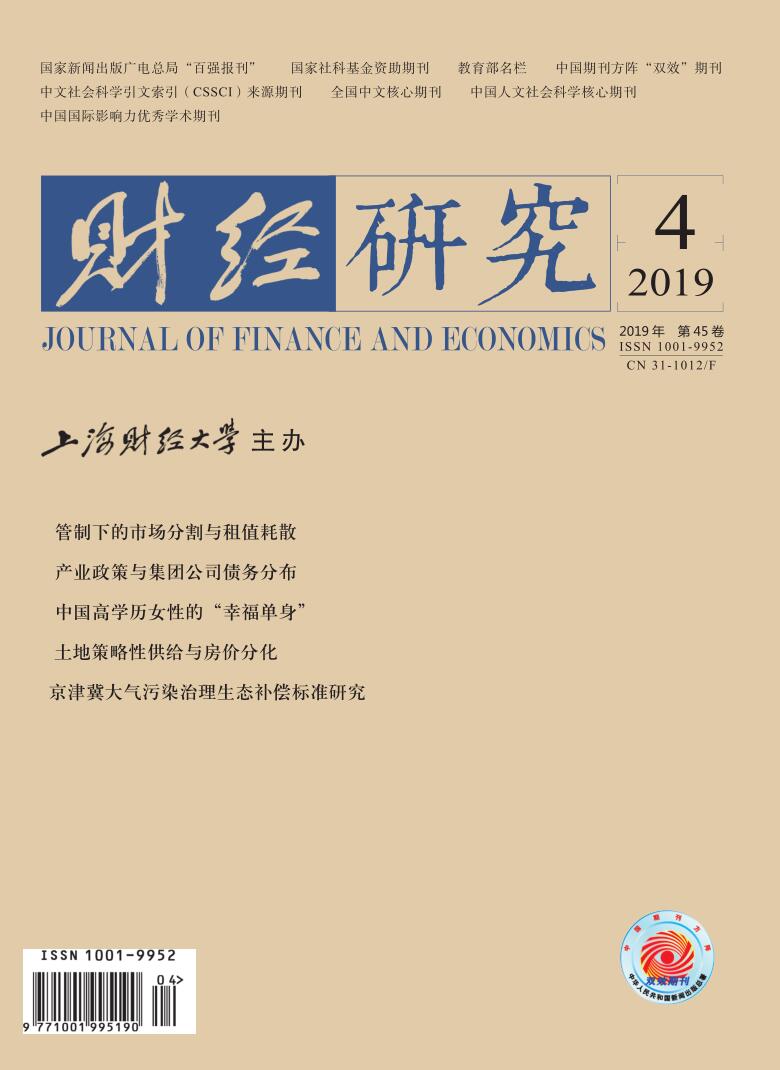京津冀大气污染跨区域合作治理是理论界和决策层的广泛共识,但因缺乏有效激励机制而一直没有实质性推进。文章基于机会成本法建立了京津冀大气污染治理的CGE模型,定量研究了京津冀大气污染治理生态补偿标准问题,并构建了一个“先定上限,后定下限,再定额度”的京津冀大气污染治理生态补偿标准确定机制的完整框架,以最大程度地满足京津冀大气治理的内生激励需要。该框架具体如下:首先,基于静态单区域CGE模型,设定不同的硫税冲击模拟河北省承担全部京津冀大气污染治理任务下的产出损失,该损失即为京津应该支付给河北省的“理论最大补偿标准”,进而根据不同的大气污染治理(PM2.5)目标,测算出京津冀大气治理生态补偿标准的上限。然后,进一步地基于京津冀动态多区域CGE模型,模拟京津冀不同PM2.5预期目标下各自的产出损失,由此获得三地大气治理的机会成本“点值”,加总后再对比“理论最大补偿标准”,进而通过河北省第二产业的“名义”占比确定补偿标准的下限。最后,在确定了京津冀不同大气环境质量预期目标下河北省应该接受的PES支付标准区间后,在基准“点值”基础上进一步考虑功能定位、经济差距等因素的影响,对补偿额度进行调整和校准,以最终确定具体的补偿额度。文章不仅对加快推进京津冀大气污染联防联治的实质性进程具有重要的政策意义,而且为建立适合我国特点的生态补偿机制提供了重要启示和技术支持。
京津冀大气污染治理生态补偿标准研究
摘要
参考文献
1 石敏俊, 李娜, 袁永娜, 等. 低碳发展的政策选择与区域响应[M]. 北京: 科学出版社, 2012.
4 Dissou Y,Siddiqui M S. Can carbon taxes be progressive?[J]. Energy Economics,2014,42: 88−100. DOI:10.1016/j.eneco.2013.11.010
5 Engel S,Pagiola S,Wunder S. Designing payments for environmental services in theory and practice:An overview of the issues[J]. Ecological Economics,2008,65(4): 663−674. DOI:10.1016/j.ecolecon.2008.03.011
6 Guo Z Q,Zhang X P,Zheng Y H,et al. Exploring the impacts of a carbon tax on the Chinese economy using a CGE model with a detailed disaggregation of energy sectors[J]. Energy Economics,2014,45: 455−462. DOI:10.1016/j.eneco.2014.08.016
7 Kolinjivadi V,Adamowski J,Kosoy N. Recasting payments for ecosystem services(PES)in water resource management:A novel institutional approach[J]. Ecosystem Services,2014,10: 144−154. DOI:10.1016/j.ecoser.2014.08.008
8 Kosoy N,Martinez-Tuna M,Muradian R,et al. Payments for environmental services in watersheds:Insights from a comparative study of three cases in Central America[J]. Ecological Economics,2007,61(2-3): 446−455. DOI:10.1016/j.ecolecon.2006.03.016
9 Lee C Y,Zhou P. Directional shadow price estimation of CO2,SO2 and NOx in the United States coal power industry 1990-2010[J]. Energy Economics,2015,51: 493−502. DOI:10.1016/j.eneco.2015.08.010
11 Pagiola S,Ramírez E,Gobbi J,et al. Paying for the environmental services of silvopastoral practices in Nicaragua[J]. Ecological Economics,2007,64(2): 374−385. DOI:10.1016/j.ecolecon.2007.04.014
12 Porras I, Grieg-Gran M, Neves N. All that glitters: A review of payments for watershed services in developing countries[M]. UK: International Institute for Environment and Development(IIED), 2008.
13 Sun J,Dang Z L,Zheng S K. Development of payment standards for ecosystem services in the largest interbasin water transfer projects in the world[J]. Agricultural Water Management,2017,182: 158−164. DOI:10.1016/j.agwat.2016.06.025
14 Whittington D,Pagiola S. Using contingent valuation in the design of payments for environmental services mechanisms:A review and assessment[J]. The World Bank Research Observer,2012,27(2): 261−287. DOI:10.1093/wbro/lks004
15 Wunder S. Payments for environmental services: Some nuts and bolts[R]. CIFOR Occasional Paper No. 42, 2005.
16 Wunder S. Revisiting the concept of payments for environmental services[J]. Ecological Economics,2015,117: 234−243. DOI:10.1016/j.ecolecon.2014.08.016
17 Xie J,Saltzman S. Environmental policy analysis:An environmental computable general-equilibrium approach for developing countries[J]. Journal of Policy Modeling,2000,22(4): 453−489. DOI:10.1016/S0161-8938(97)00076-8
18 Yang W,Liu W,Viña A,et al. Performance and prospects of payments for ecosystem services programs:Evidence from China[J]. Journal of Environmental Management,2013,127: 86−95. DOI:10.1016/j.jenvman.2013.04.019
引用本文
魏巍贤, 王月红. 京津冀大气污染治理生态补偿标准研究[J]. 财经研究, 2019, 45(4): 96-110.
导出参考文献,格式为:






 5940
5940  8517
8517

